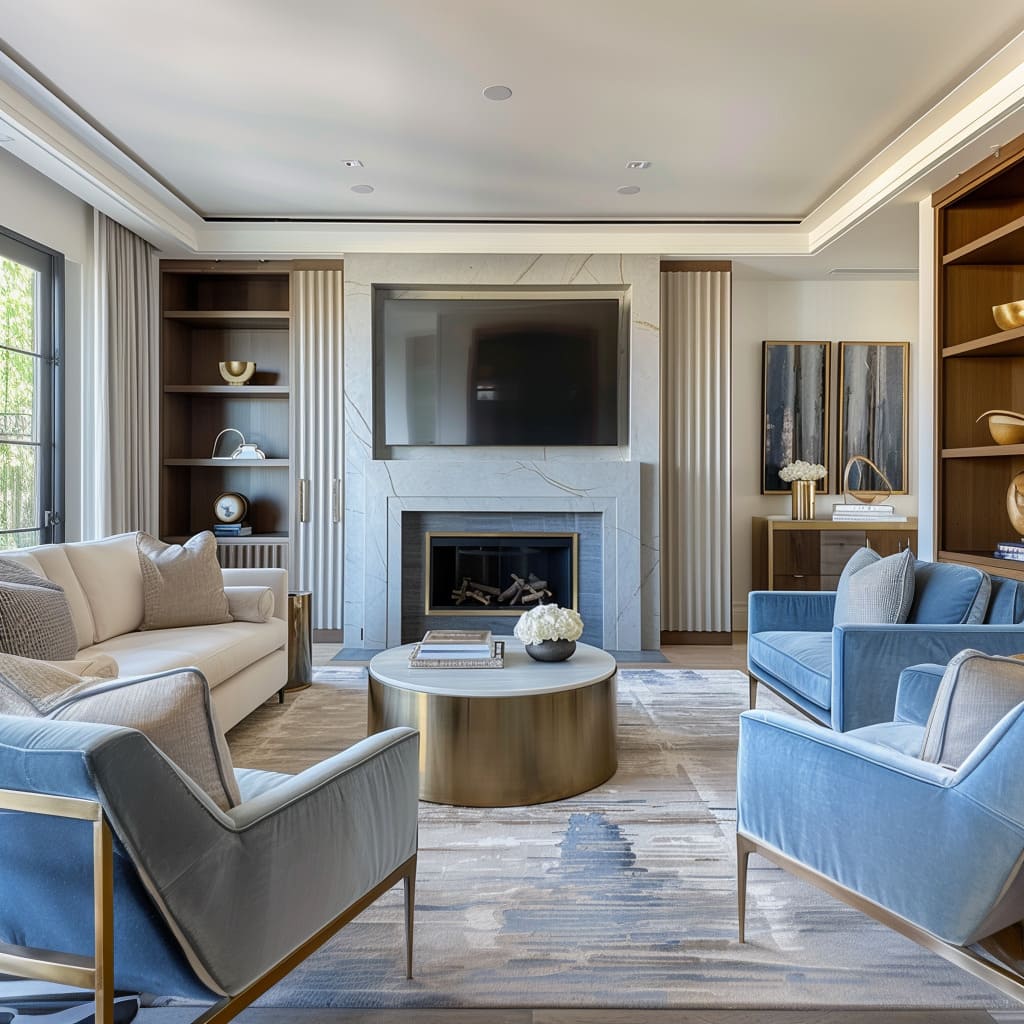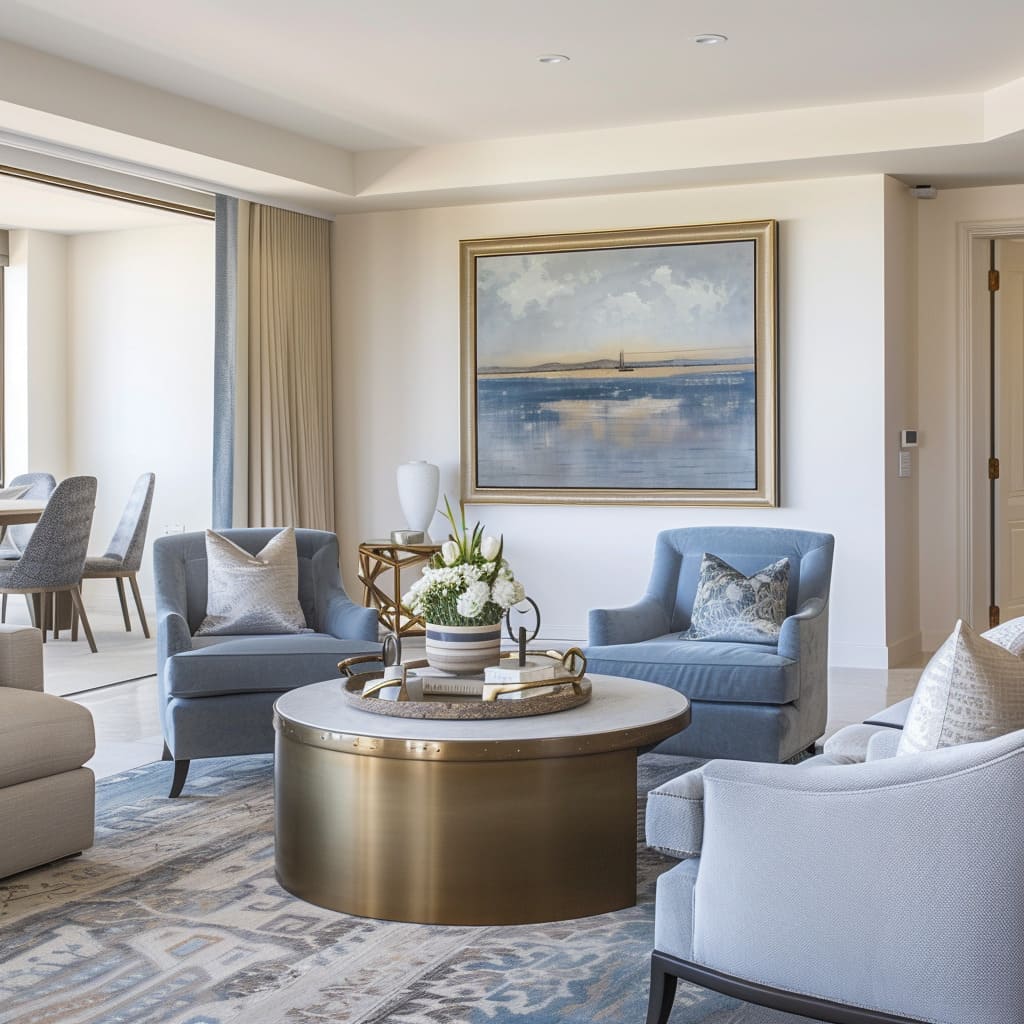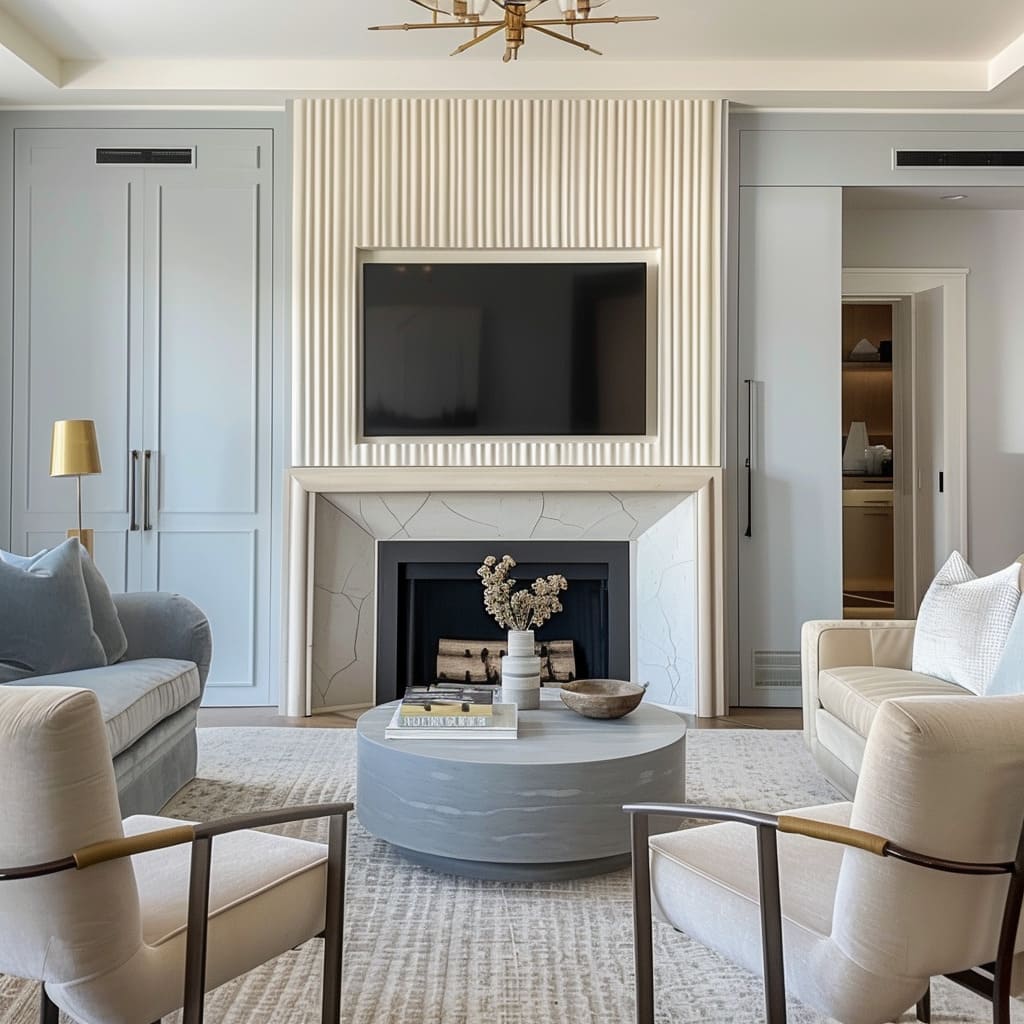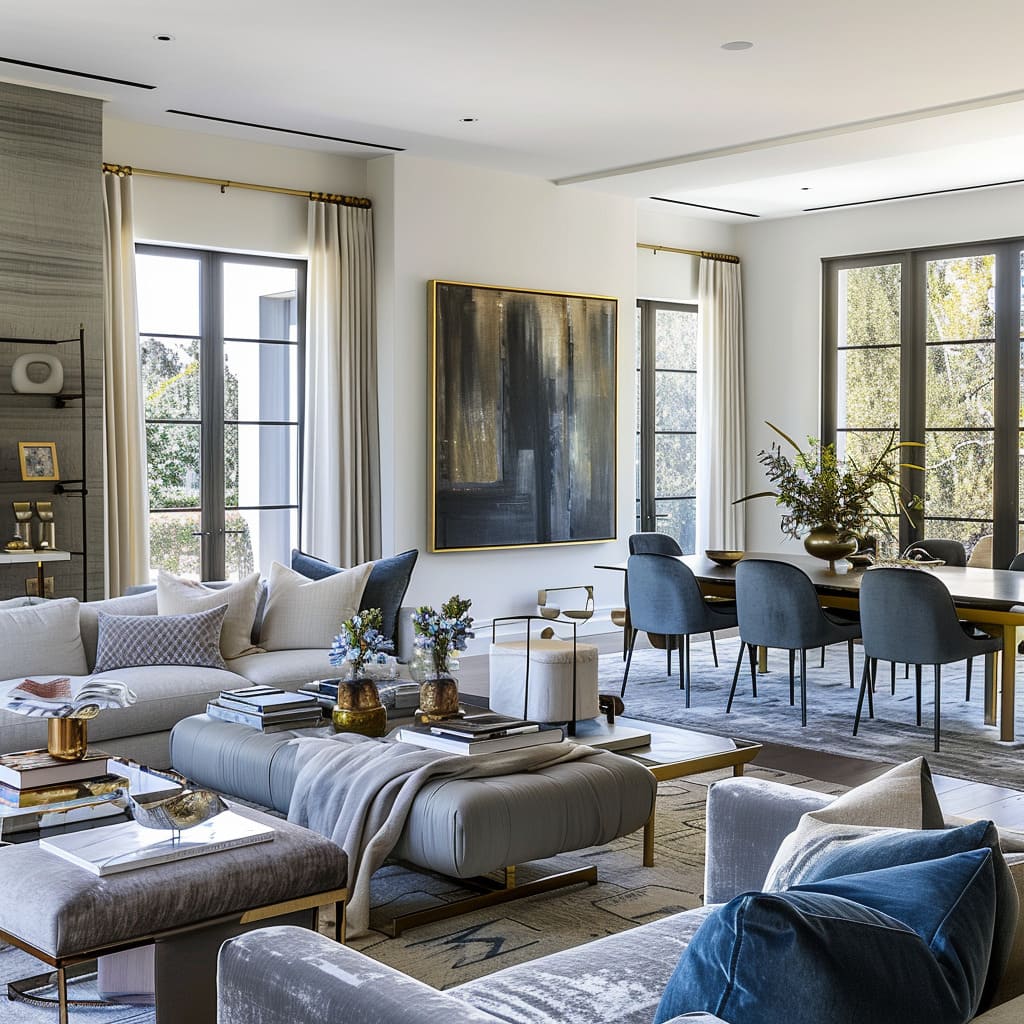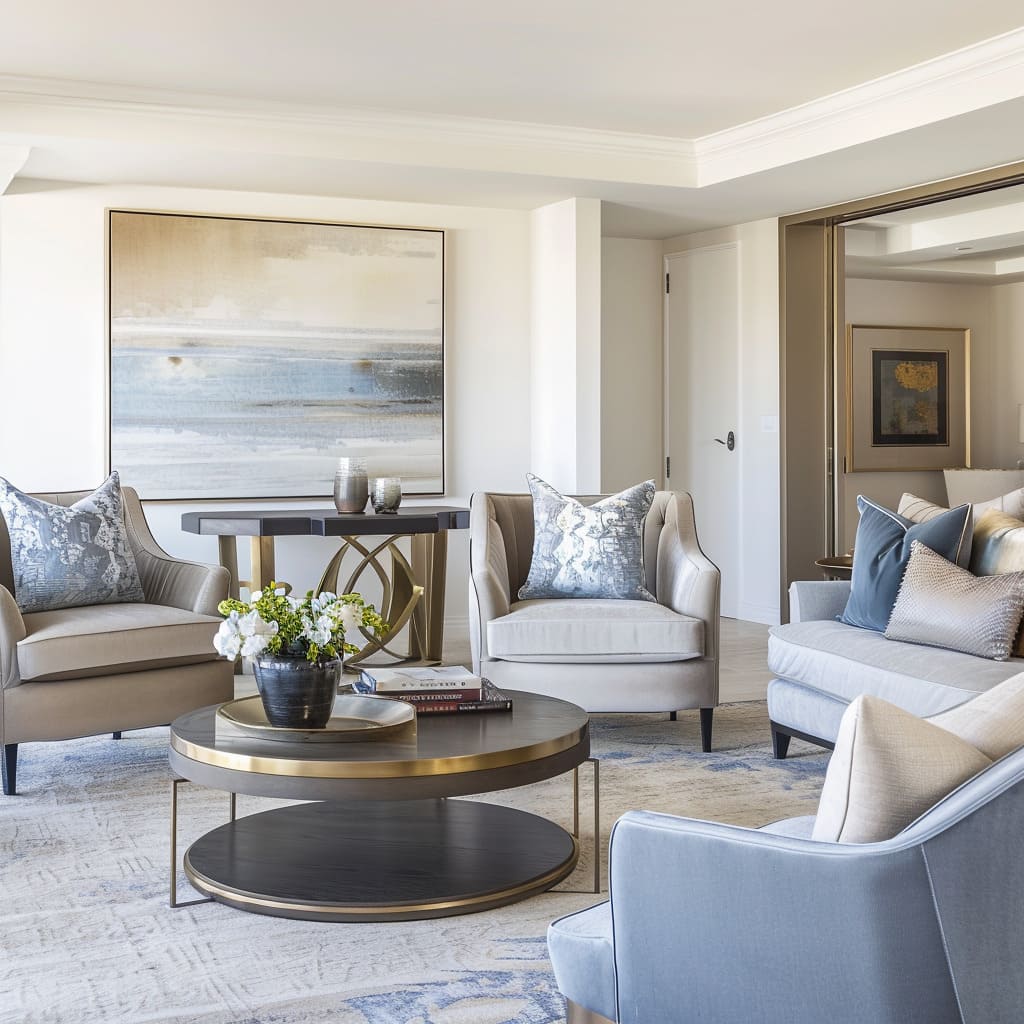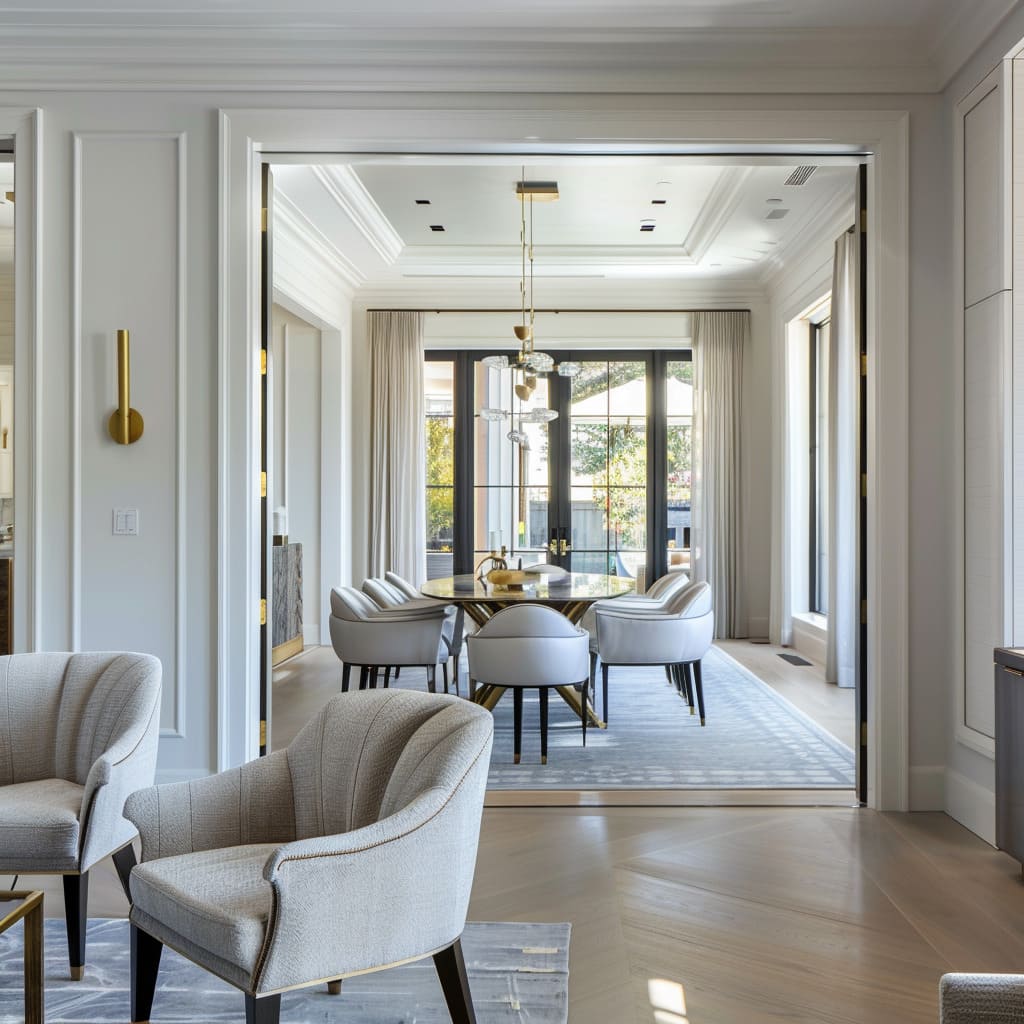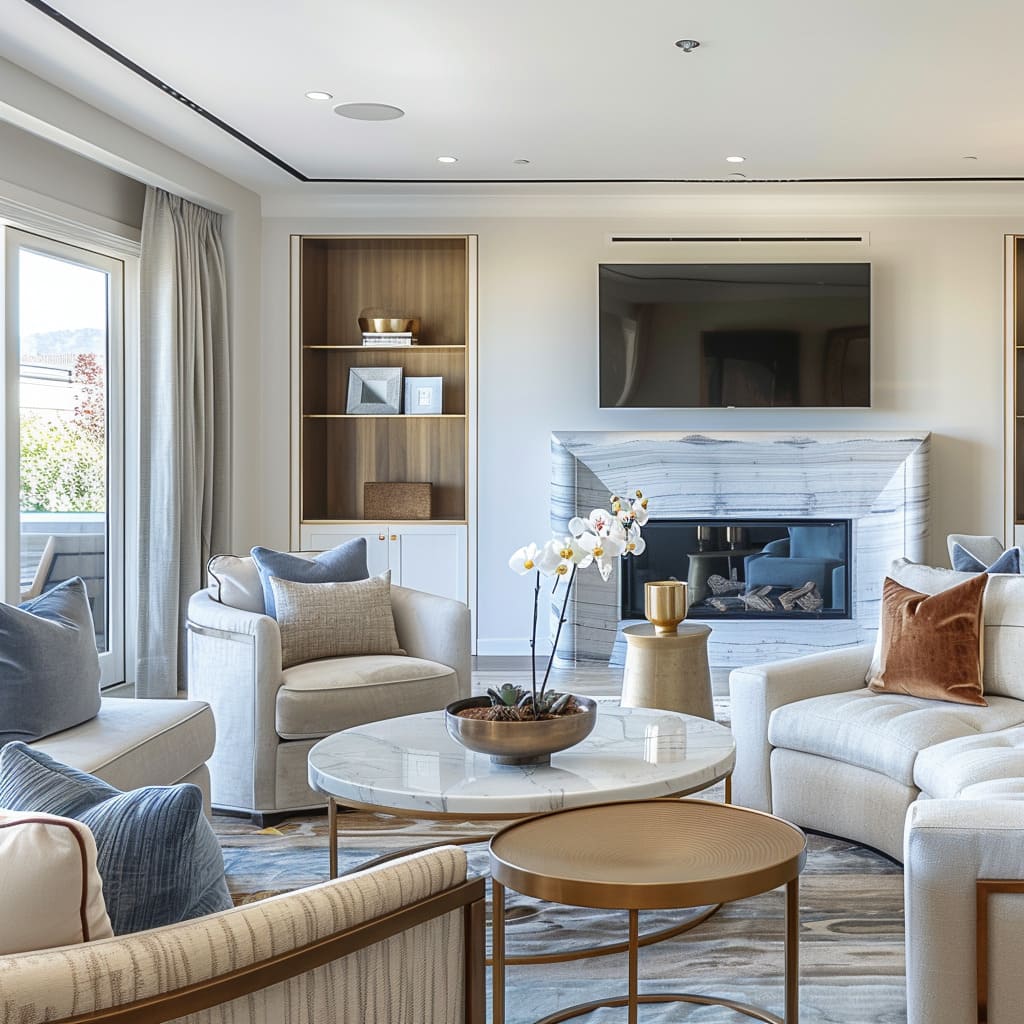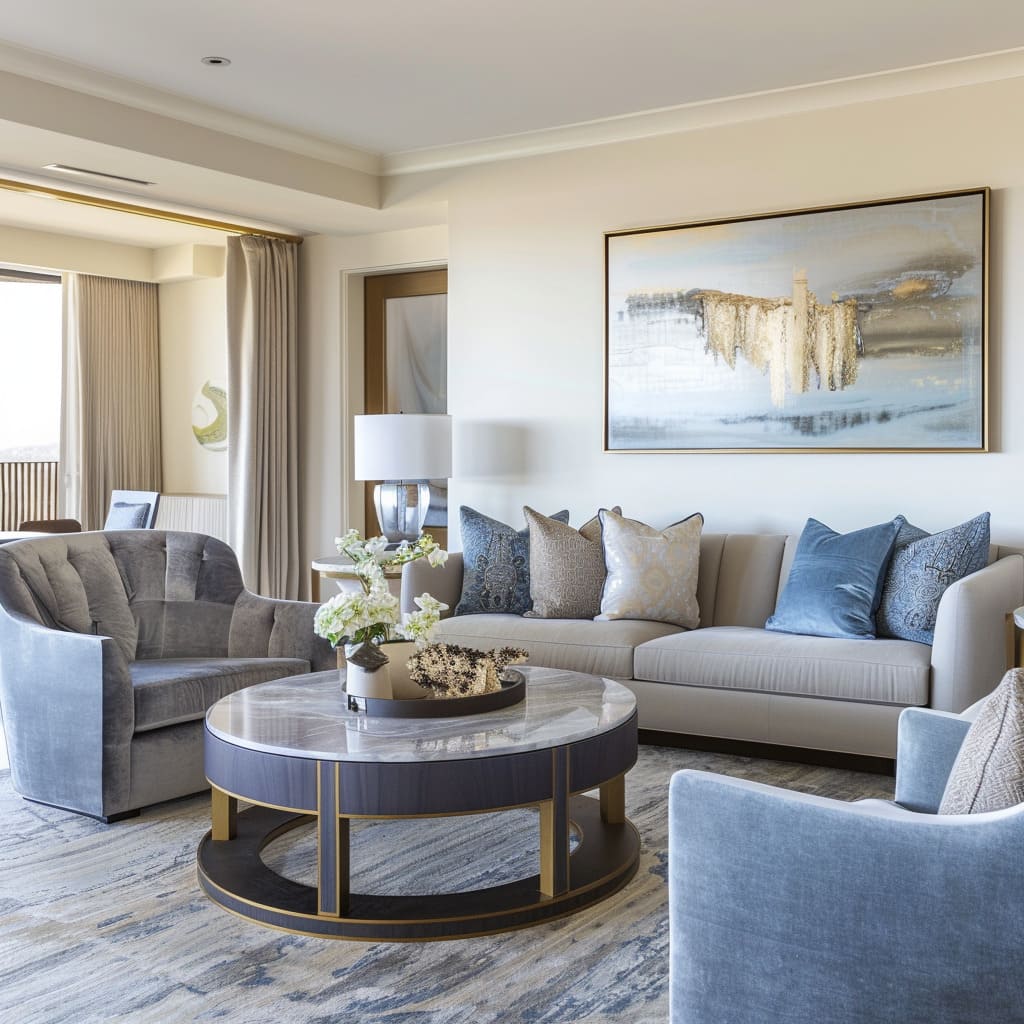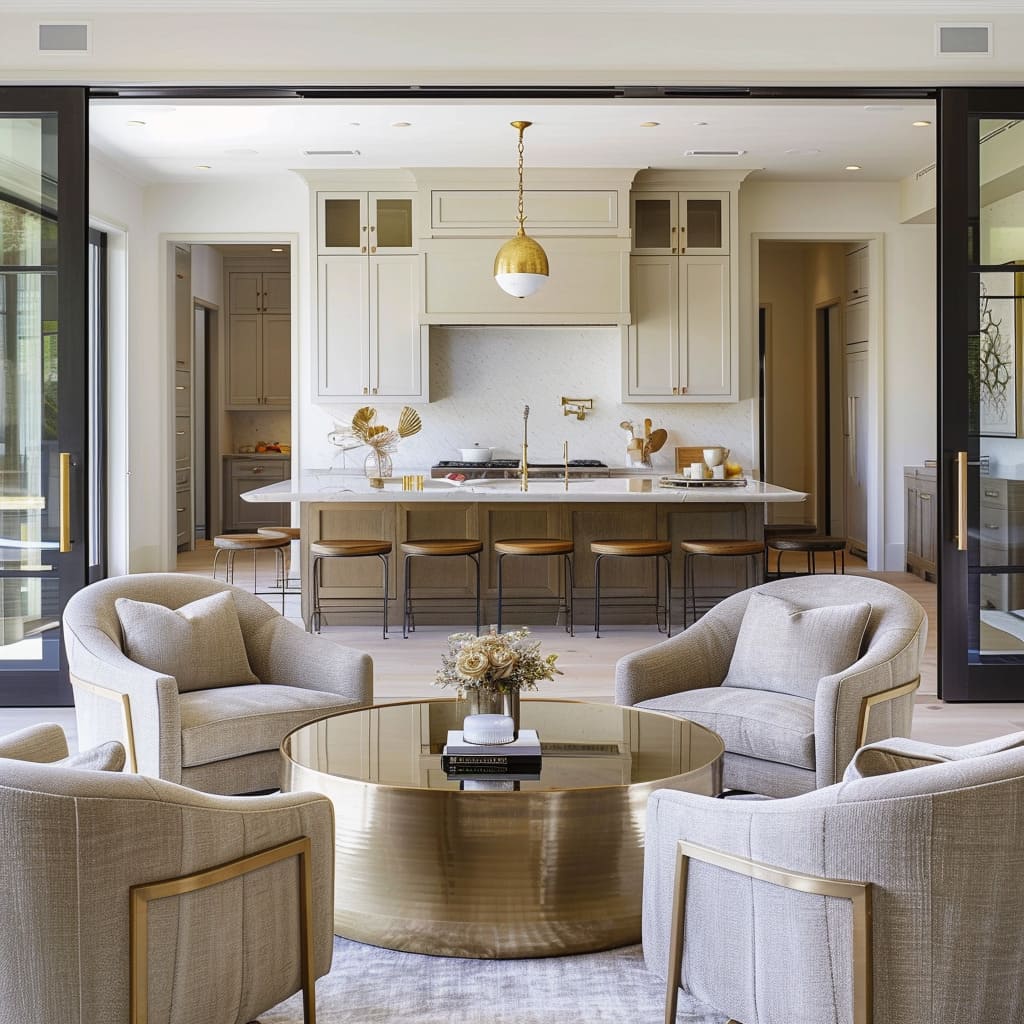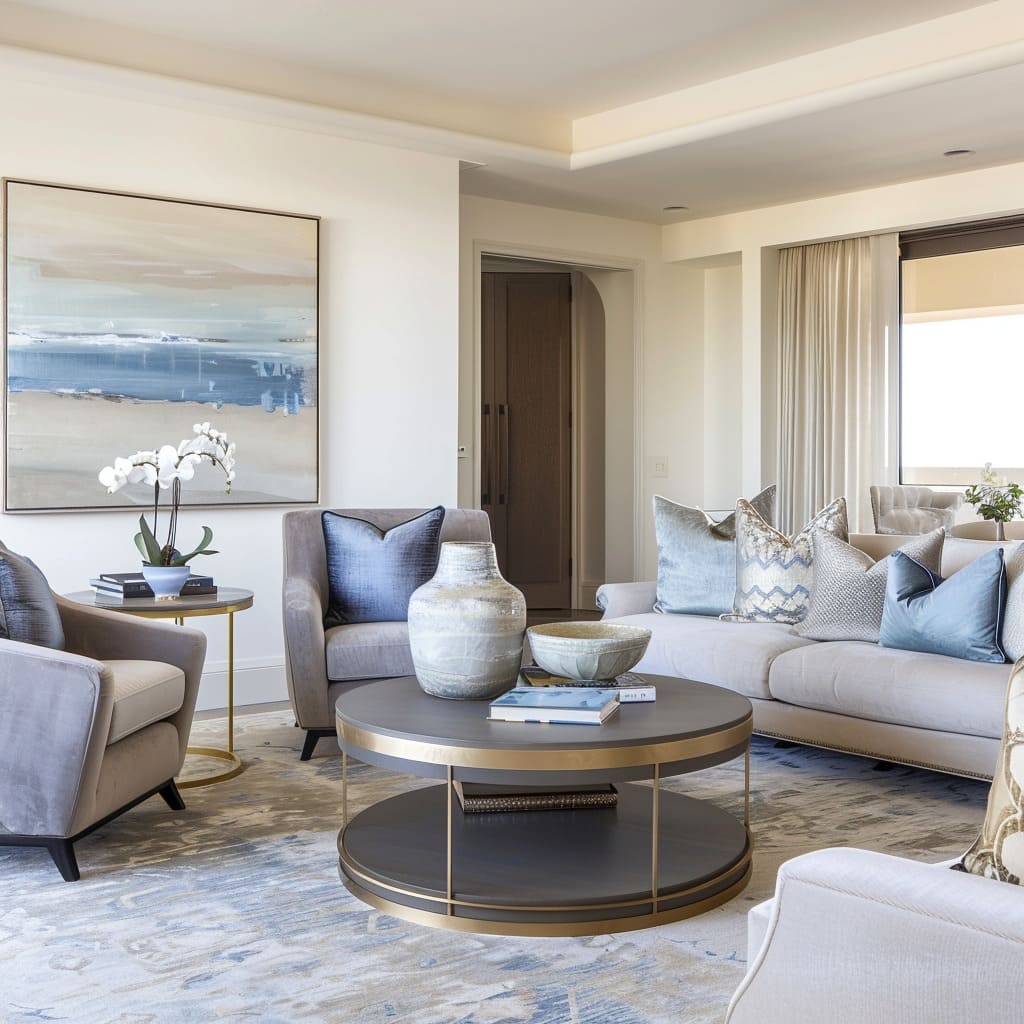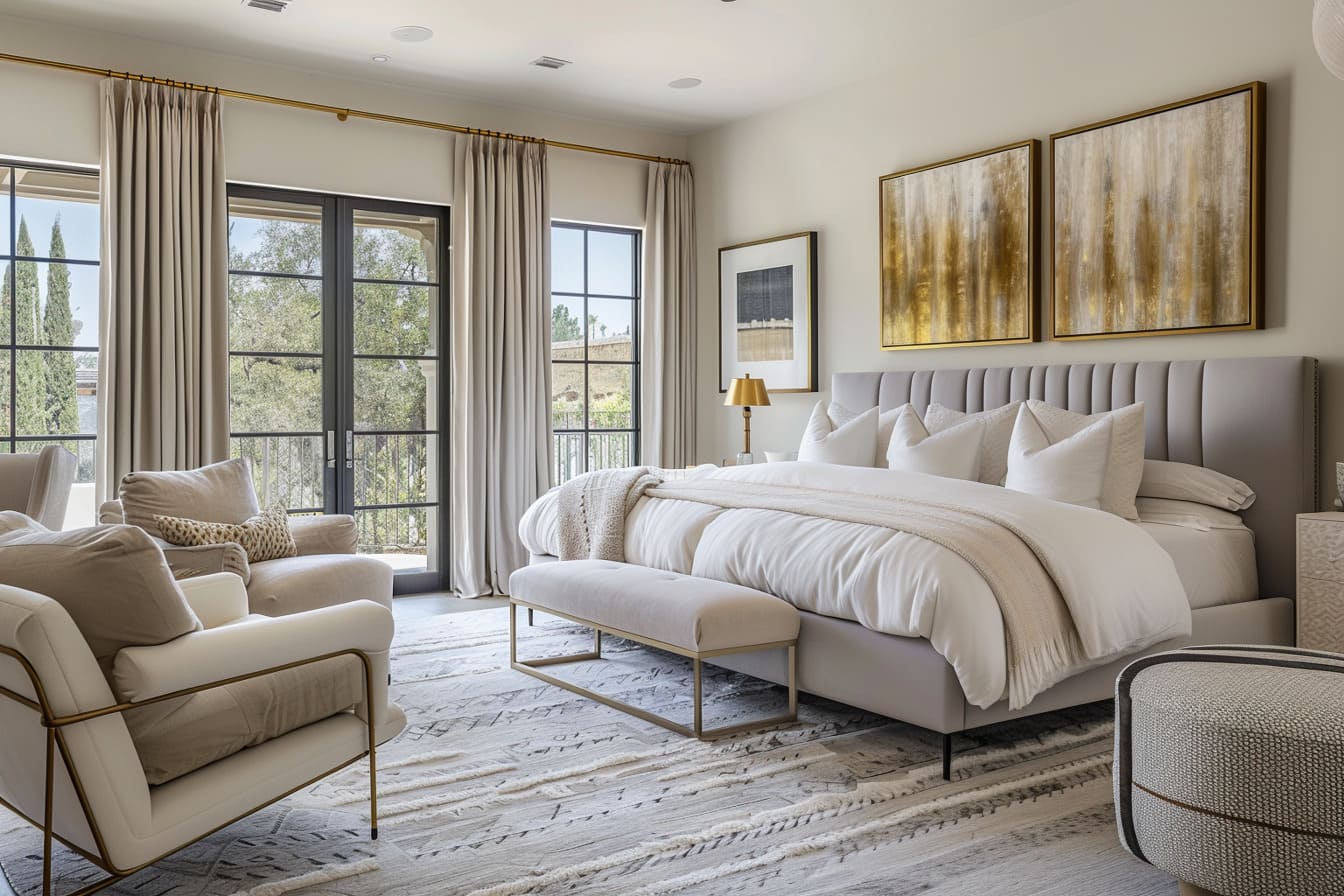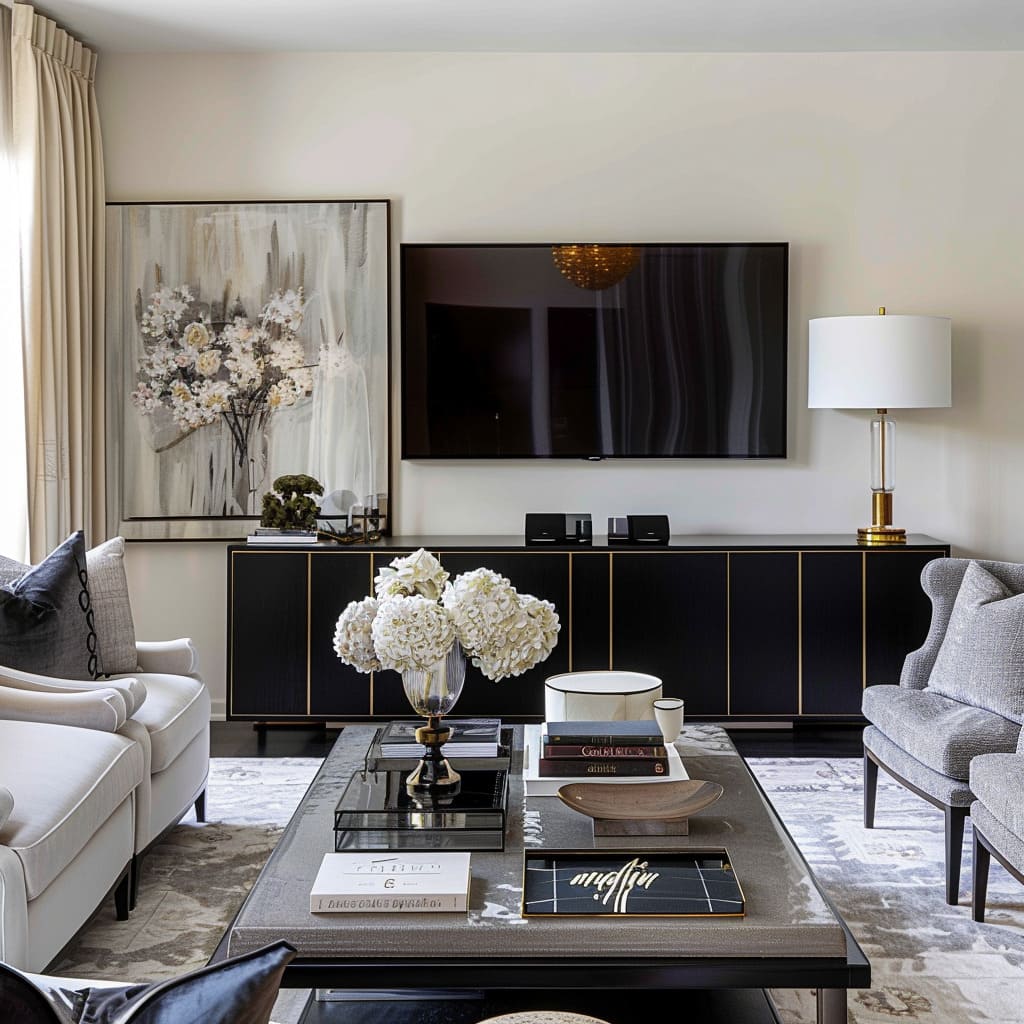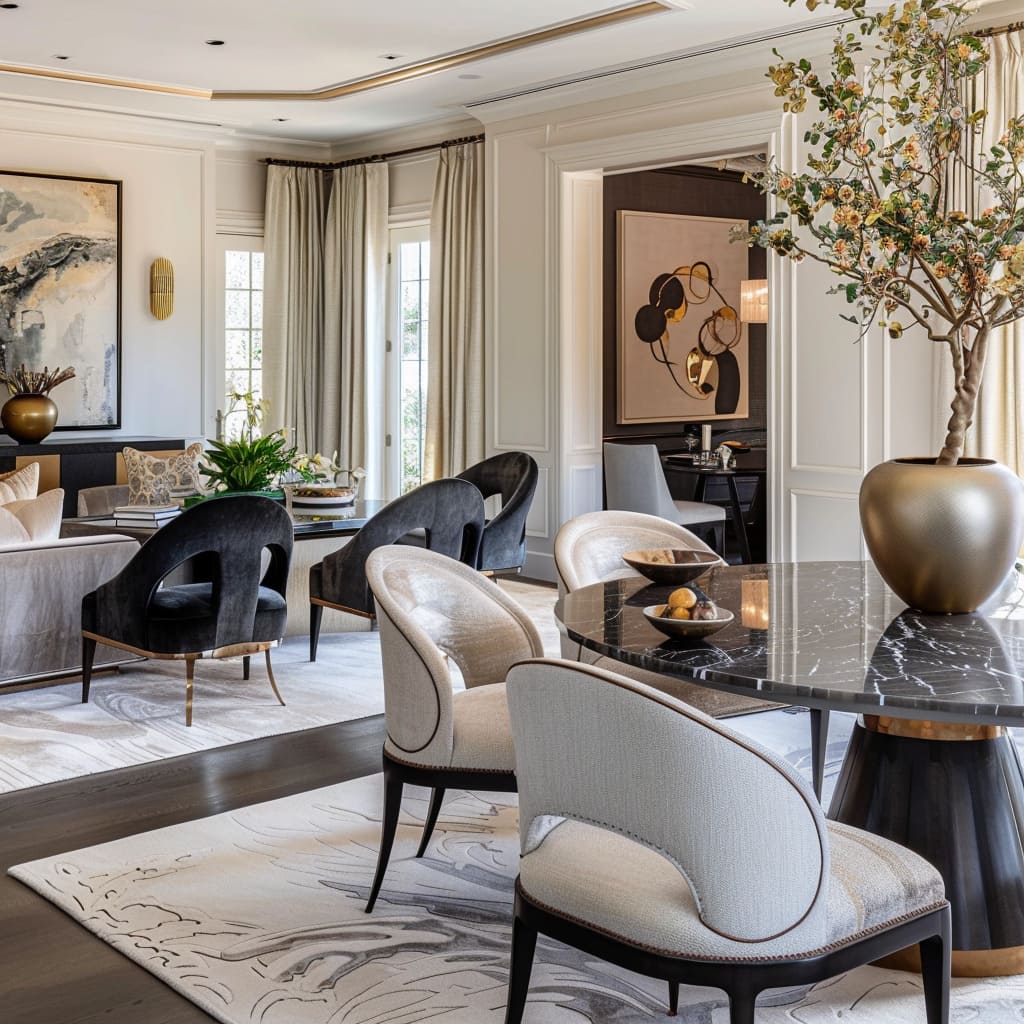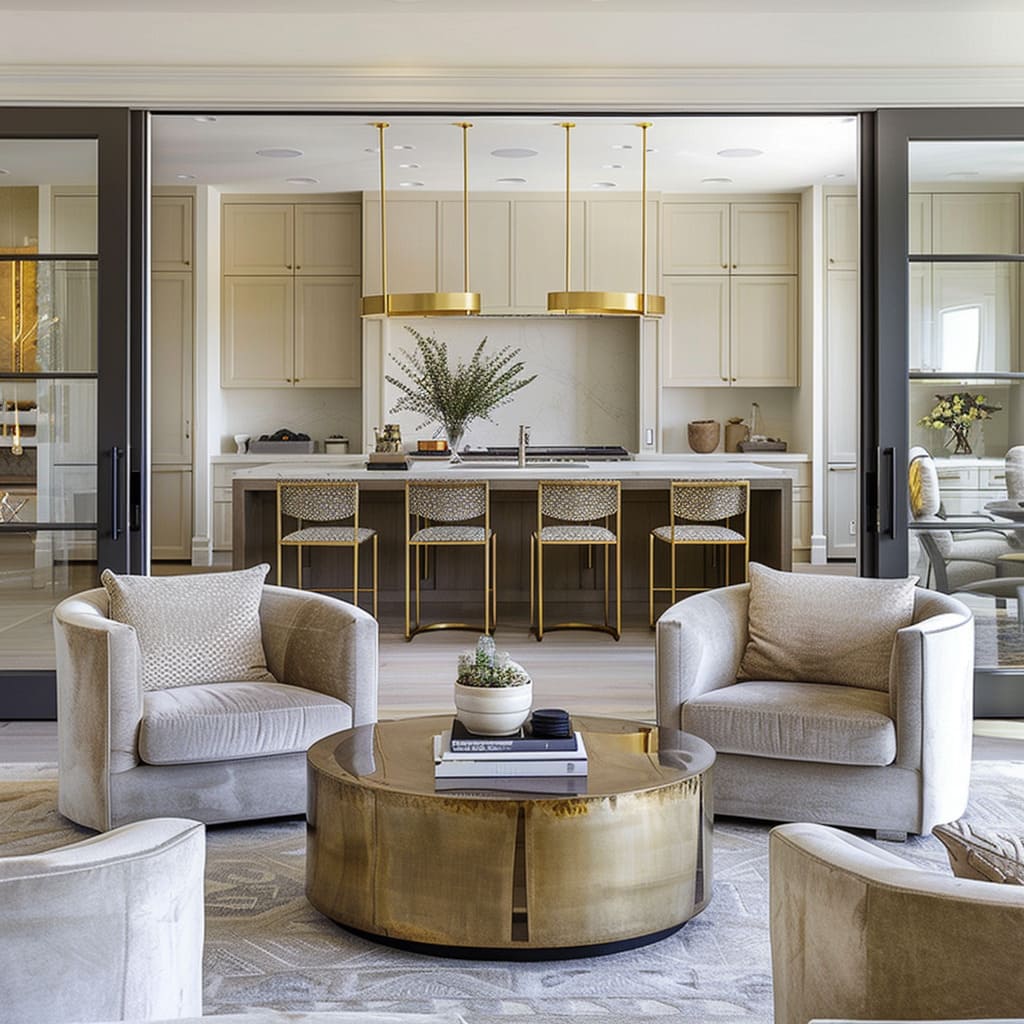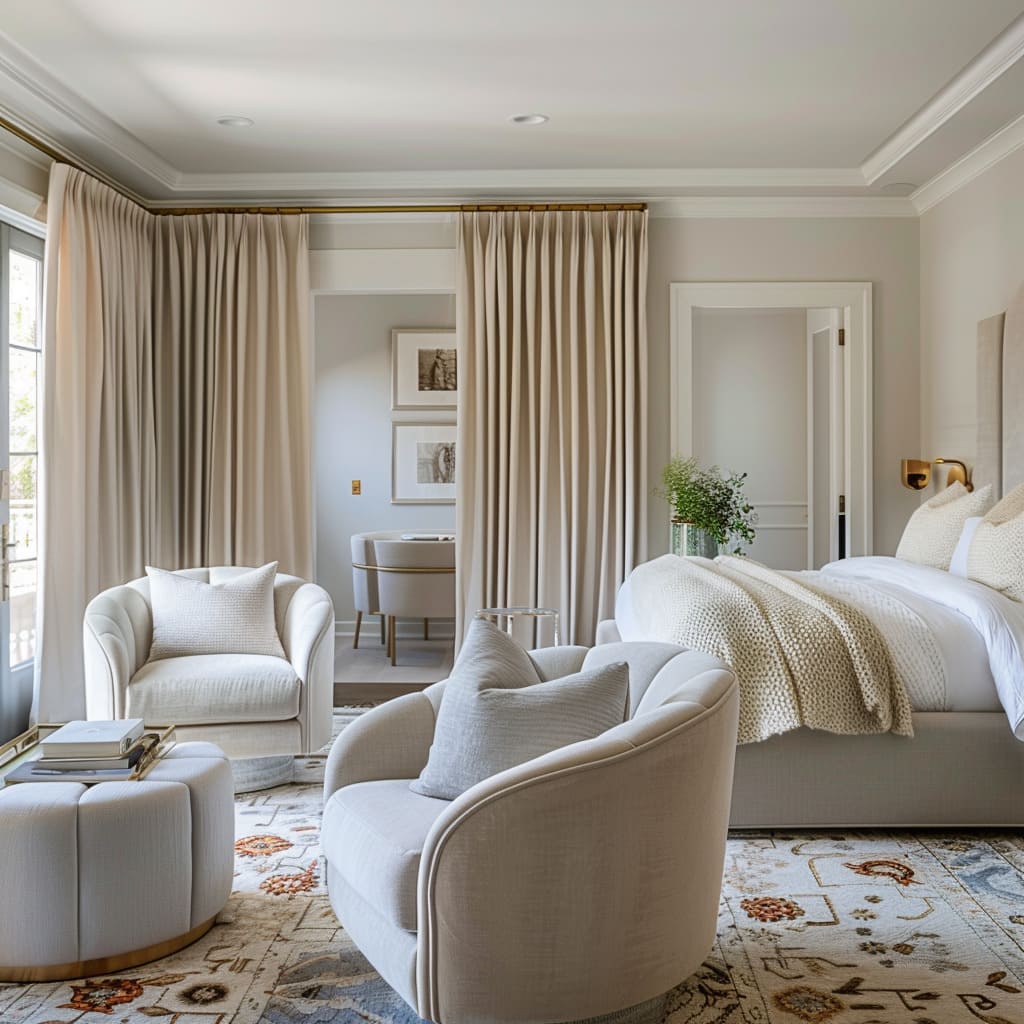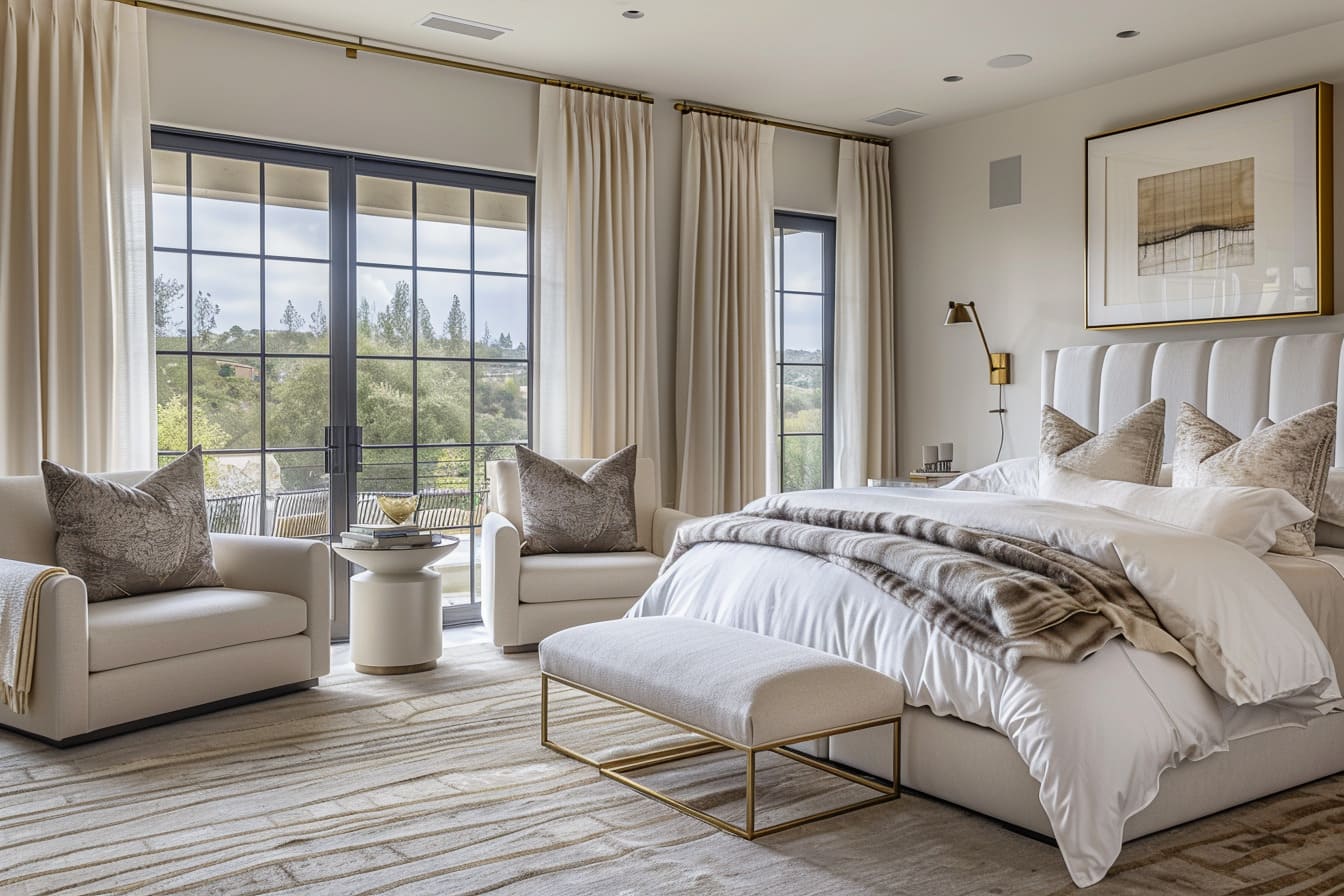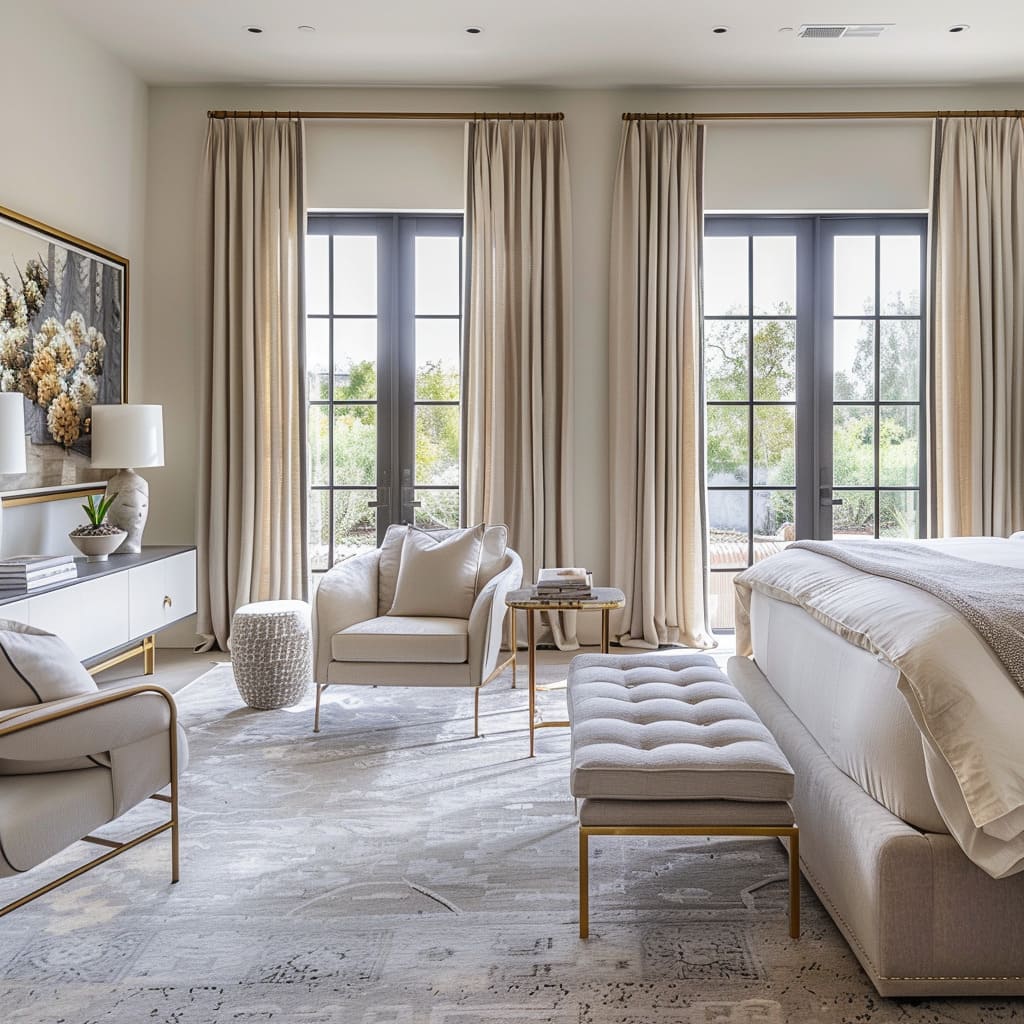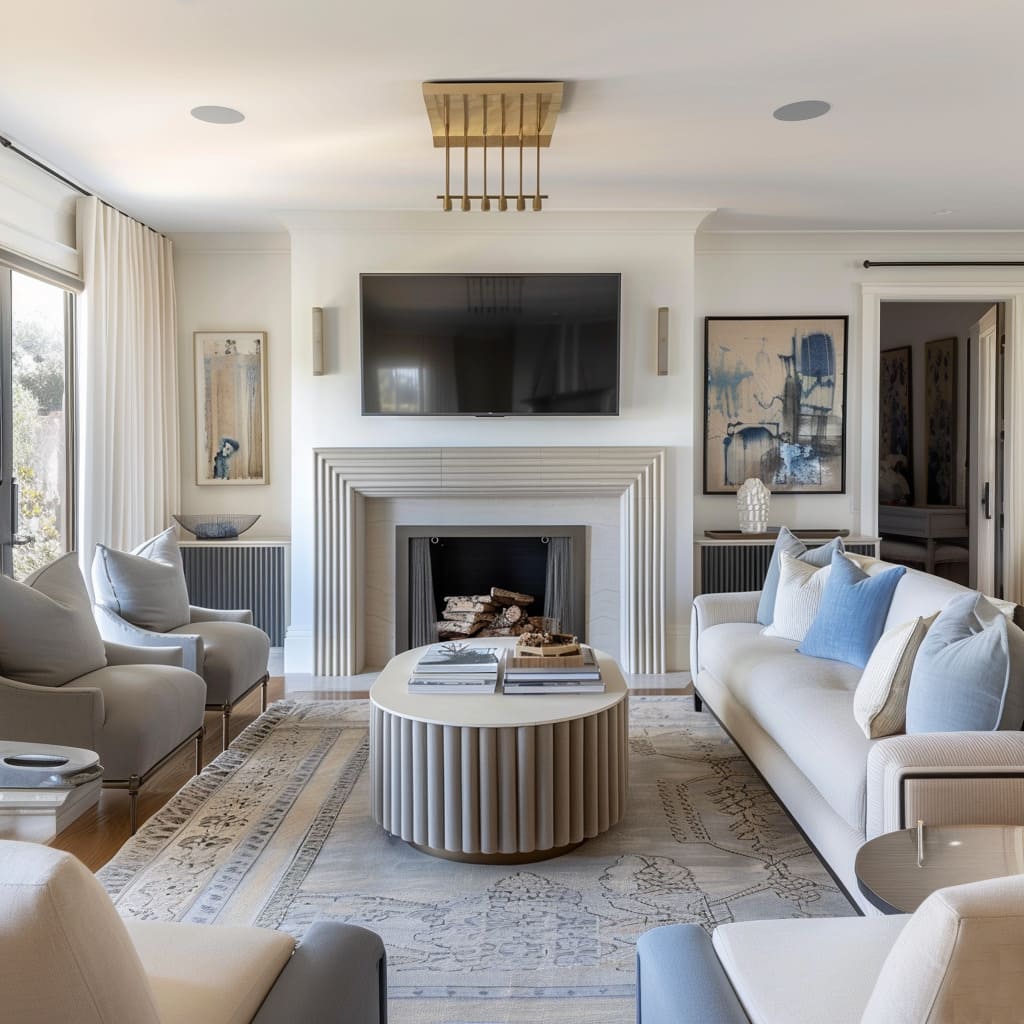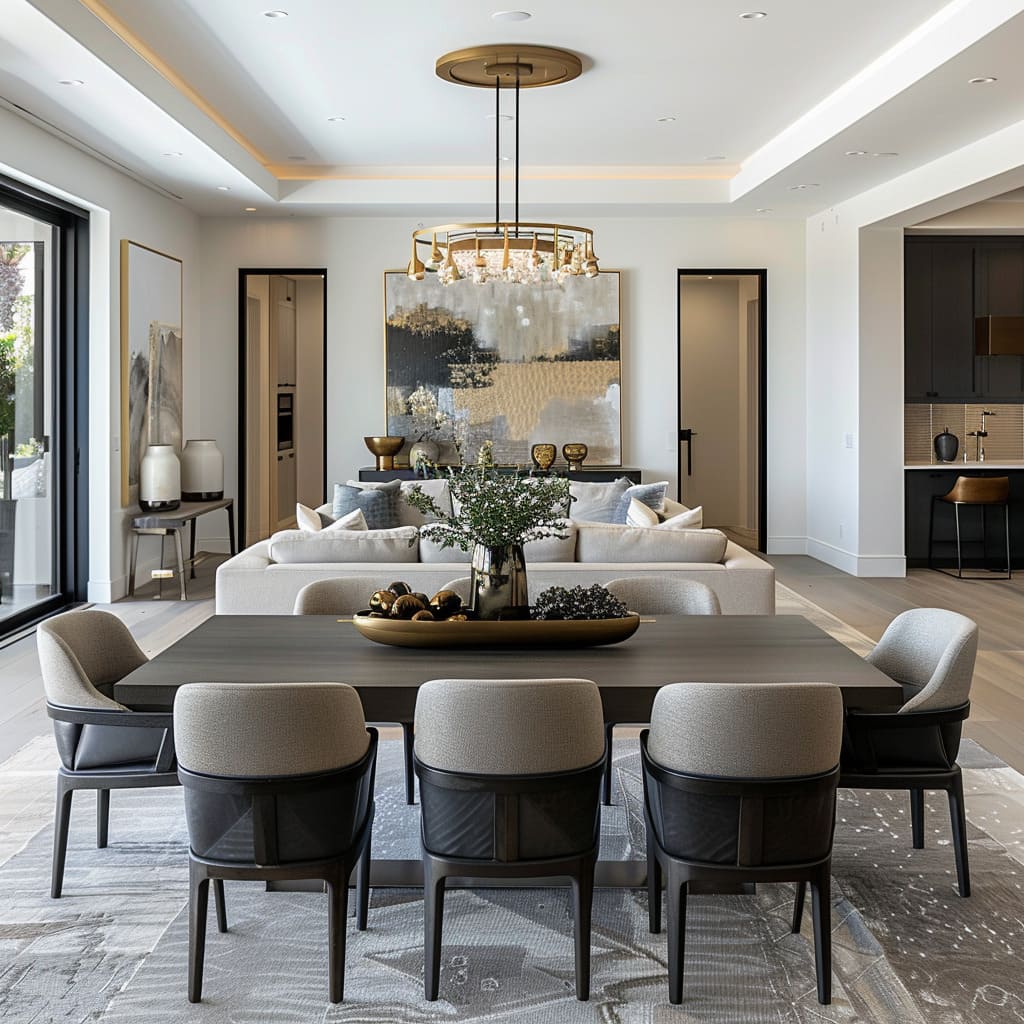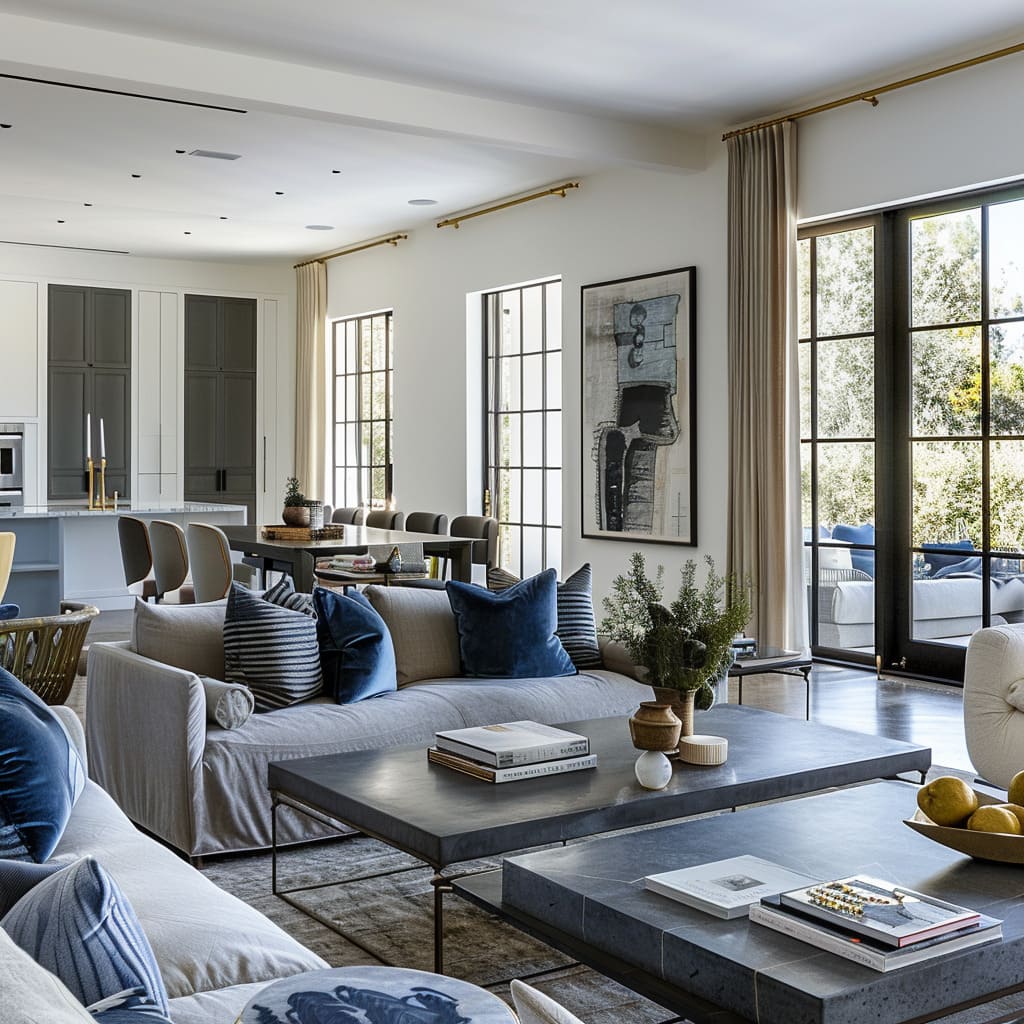In the tapestry of interior design, transitional elegance stands out for its unique blend of classical warmth and modern clarity. This approach to design, while opulent in appearance, does not necessitate a fortune to achieve.
The key to unlocking this coveted aesthetic is to marry high-end style with smart, budget-friendly strategies. By focusing on key elements such as color, materials, and strategic design choices, one can craft an environment that exudes sophistication without the lavish price tag, proving that true style doesn’t have to be expensive—it just has to be thoughtfully executed.
Color Mastery: The journey to transitional luxury begins with the walls. The serene palette that typifies this style—a medley of soft creams, beiges, and grays—can be economically realized with carefully chosen paints.
These soothing hues, available in a variety of price points, set the stage for a space that feels both expansive and grounded, without the need for expensive applications or treatments.
The right color can elevate a room, creating a rich backdrop that allows furniture and decor to stand out. The trick is in selecting shades that offer versatility and depth, mimicking the nuanced hues typically seen in more lavish interiors.
Furniture Finds: furnishings in transitional design are characterized by their sleek yet plush nature. To replicate this on a budget, explore mainstream retailers for pieces with similar lines to those of high-end brands.
Opt for a statement sofa that anchors the living space, then mix in less expensive side chairs, tables, and consoles. The luxury look often lies in the fabric choice; slipcovers in rich textures can transform even the most basic of furniture into something that feels custom and bespoke.
It’s about selecting pieces that offer the visual impact of luxury without the accompanying price, focusing on clean lines, durable materials, and a cohesive aesthetic that ties the room together.
Textiles and Trims: The tactile experience of luxury can be mimicked with smart textile choices. Curtains, pillows, and throws in rich textures bring depth and comfort to the space.
Look for sales, discount outlets, or even online marketplaces for deals on these items. A velvet throw or faux fur blanket can add a touch of opulence without the associated cost.
Layering these textiles can produce a sumptuous effect that appeals to the senses, emulating the luxurious feel of high-end designs. Opt for a mix of materials – linens for their natural elegance, velvets for their plushness, and wools for their warmth – to create a curated look that speaks to a refined yet comfortable lifestyle.
Savvy Lighting Solutions: lighting can dramatically alter the mood of a room, and in a transitional space, it doubles as a decorative feature. Economical choices abound in the form of lamps and fixtures that draw inspiration from designer trends.
LED options offer a cost-effective and long-lasting solution, while the strategic use of dimmers can create an atmosphere that is both dynamic and intimate.
Illumination should not only serve its fundamental purpose but also act as a design element. Affordable floor lamps, table lamps, and pendant lights in modern shapes and finishes can emulate the bespoke quality of custom lighting, adding character and focus to the room.
Art and Decor on a Dime: art and decor need not be expensive to be impactful. High-quality prints, particularly those in abstract styles, can evoke a sense of luxury at a fraction of the cost of original artwork.
Additionally, one can find unique and affordable pieces through thrifting, estate sales, and even by upcycling found objects into something new and exciting.
Art should tell a story and reflect the personality of the homeowner, making the space truly individualized. Frames can be repainted or refinished, and mats can be replaced to give second-hand art a fresh, contemporary look.
Decor elements, when chosen thoughtfully, can bring a high-end aesthetic to the forefront, proving that creativity can triumph over budget constraints.
Flooring Foundations: while hardwood and marble might set the standard in high-end design, there are numerous alternatives that achieve the same look for less. Luxury vinyl tile, laminate flooring, and even polished concrete can provide a similarly elegant base for your furniture.
Floor tiles are a practical and stylish flooring option that can significantly influence the design of a room. For those seeking an affordable path to luxury, porcelain or ceramic tiles that mimic the look of natural stone or wood can be an excellent choice.
These materials offer the visual appeal of more expensive options but are more accessible, durable, and easier to maintain. When selecting floor tiles, consider size and color carefully; larger tiles can make a small space seem bigger, and choosing a color that complements the overall design palette will ensure a cohesive look.
For added sophistication, consider laying the tiles in a herringbone or chevron pattern to inject a sense of bespoke design into your space. The warmth and classic appeal of wood flooring are desirable in many homes, but solid hardwood can be cost-prohibitive.
Engineered wood or high-quality laminate can offer the same warmth and texture as hardwood but at a more accessible price point.
When choosing wood flooring, consider the color and grain pattern that will best suit your transitional style. Warmer tones can add coziness to a room, while cooler tones will create a more modern feel.
The width of the planks also plays a role; wider planks can give a more open and less busy appearance, while narrower planks can feel more traditional. Remember to take into account the durability and the room’s usage, ensuring that your choice not only looks luxurious but also stands up to everyday life.
Area rugs, a staple in transitional design for their ability to define spaces, can be sourced from discount retailers or second-hand stores, offering a high-end look without the lofty price tag. In addition to these cost-effective solutions, consider bamboo or cork flooring, which offer sustainability and a unique aesthetic at a fraction of the cost.
The right rug or floor finish can act as the room’s anchor, harmonizing the various elements and setting a luxurious tone from the ground up.
Accessorize Wisely: when it comes to accessories, less is more in a transitional interior. Choose fewer, larger pieces rather than many small ones.
A large, striking vase or a boldly patterned tray can provide a focal point that draws the room together. Incorporating elements such as candles can add ambiance and warmth to the space, while strategically placed mirrors enhance natural light and create an illusion of spaciousness.
Fresh flowers or high-quality silk alternatives can bring in a touch of nature and vibrancy. Shopping off-season and taking advantage of online deals can result in significant savings for these decorative elements.
Select pieces that tell a story or evoke emotion, as these will not only serve as conversation starters but will also bestow your space with a personal touch that feels rich and lived-in.
Television Placement: in a beautifully designed room, a television can either be a focal point or blend seamlessly into the decor. The key to integrating a television gracefully into a transitional space is to maintain the room’s elegant aesthetic while acknowledging modern functionality.
Consider mounting the TV on the wall at eye level when seated; this not only saves space but also gives a clean, gallery-like display that enhances the room’s design. To further integrate the television into your space, place it above a low-profile media console or within a custom-built recess that can hide the TV when not in use.
For a truly harmonious integration, the television can be surrounded by art, so when it’s off, it becomes part of an art wall, contributing to the room’s beauty rather than detracting from it.
When incorporating a television into your transitional interior, it’s essential to ensure that it doesn’t overpower the space. One way to achieve this is by selecting a sleek, modern TV with a minimal bezel, which can help it to look more like a piece of technology and less like a bulky appliance.
If you prefer the TV to be less noticeable, consider a media wall with complementary colors to your decor, which can help the TV to visually recede when not in use. Additionally, incorporating decorative elements on the media console, such as tasteful vases, books, or sculptural objects, can create a visually interesting display that draws attention away from the television itself.
The space surrounding your television offers an opportunity to showcase your personal style. Start with a stylish media console that not only houses your TV but also serves as a platform for decorative items.
Accessorize with items of varying heights and textures, like candlesticks, small plants, or elegant figurines, to create a visually interesting tableau. For an added touch of luxury, place a couple of designer coffee table books on the console or stack them neatly on an adjacent shelf.
These touches not only enhance the beauty of the television area but also integrate it into the overall design theme of the room.
In essence, achieving a transitional design does not demand an extravagant budget; it requires an eye for detail and a knack for blending. By investing in a few key pieces and shopping wisely for others, anyone can create a space that exudes a sense of tailored luxury.
It’s about crafting a narrative of elegance and comfort that reflects a discerning taste, where each chosen element resonates with the symphony of affordable luxury.
The true artistry lies in the ability to give everyday objects a sense of importance and to arrange them in a way that their beauty and function are amplified—a skill that makes the transitional style both aspirational and attainable.
